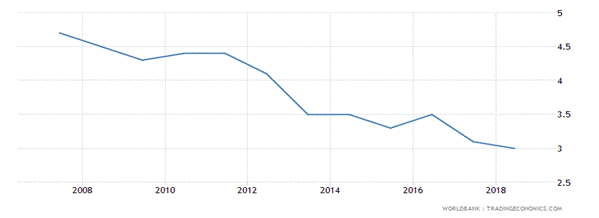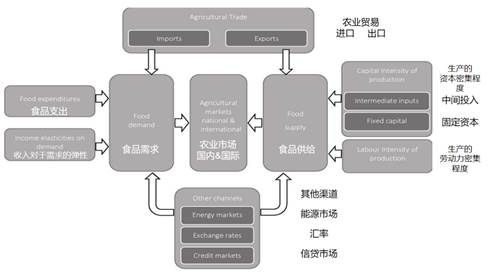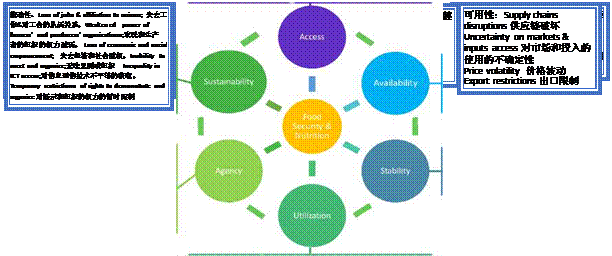AGRICULTURAL UNIVERSITY – PLOVDIV
12 Mendeleev Blvd. 4000 Plovdiv, Bulgaria
AGRICULTURAL PRODUCTION AND FOOD SECURITY
IN EPIDEMIC ERA
THE CASE OF BULGARIA
COVID-19 has been recognized as a global challenge, threatening all aspects of the socio-economic life and agricultural universities worldwide play an important role of solving some of the problems. The Agricultural University – Plovdiv has 75 years of education, research and development history. Students from Europe, Africa, Asia, China, North and South Americas have graduated and flowed into their country’s economy.
The COVID-19 is likely to increase the hunger and poverty in different parts of the world. Bulgaria as a member of the European Union is protected to some extend, thanks to the resilience of the food chain. The large European common market with the basic principle for trade preferences among member states in short and medium term will probably withstand the major challenges of this pandemic.
Prevalence of undernourishment (% of population) in Bulgaria was reported at 3 % in 2018, according to the World Bank collection of development indicators. That is far below the indicators in Africa and Latin America.
Figure 1: Prevalence of undernourishment (% of population)

Source: World Bank
On the other hand, the COVID-19 pandemic crisis has substaintial impact on food systems. According to Schmidhuber, Pound, Qiao (2020) the effect on the agriculture and food security could be divided into few main components: primary supply and processing, trade and national and international logistics systems, intermediate and final demand. It also has serious impact on factor markets linked to the agricultural production - labour market, capital and inputs market.
Figure 2: Main channels of transmission of COVID-19 effects to food and agriculture

Source: Schmidhuber, Pound, Qiao. 2020
The COVID-19 pandemic affected the EU agricultural markets. The supply and demand by retail consumers was complicated by the closure of local markets, changed market demand and sanitary and phytosanitary measures related to trade. The combination of these effects put a strain on the food system as a whole. The impact on the demand side is linked also to the tourism industry. Number of goods produced for hotels, restaurants had to be directed in other sectors and some of the production was destroyed. On the other hand, some of the emerging patterns are related to existing trends rather than caused by COVID-19 – for example the increase in e-commerce food sales as well as the demand for local food and short supply chains.
Other impact of COVID-19 is related to the restrictions on movement of agricultural workers. It had a negative effect on the production of some crops and meat. These issues could continue in the next production season. Overall agricultural markets have stabilised in the EU and Bulgaria, but risks remain, especially as COVID-19 pandemic has second wave in many countries.
Governments in different countries took actions to reduce the impact of COVID-19. Bulgaria as a member of the EU is part of the decision process and follows the chosen policy framework of the union. Based on the European Commission proposals (2020) the measures can be divided into:
Guidelines to ensure food supply chain. They include measures for seasonal workers and secure food systems. The EU is also ensuring the food flows by creating green lanes;
Measures directly supporting farmers and rural areas.
Flexibility in the use of financial instruments under Rural development program (RDP): Farmers will be able to receive loans or guarantees to cover operational costs at favourable conditions.
New RDP measures for farmers and Small and medium enterprises (SME);
Higher advances of payments;
Higher state aid possible for farmers and food processing companies.
Exceptional market measures
Private storage aid for dairy and meat products.
Flexibility for market support programmes in the sectors wine, fruits and vegetables, table olives and olive oil, apiculture and the EU’s school scheme.
CAP simplification and increased flexibility measures that are related to the deadlines for CAP payment applications and fewer farm on-the spot checks.
The COVID-19 pandemic put the food security back on the agenda. The High Level Panel of Experts on Food Security and Nutrition (HLPE), Global Narrative report highlights six dimensions of food security (HLPE, 2020). The COVID-19 pandemic is affecting, or has been affected by, each of these dimensions. The Figure 3 illustrates the importance of each of these dimensions in interpreting the food security and nutrition implications of the crisis.
 |
Fig 3: The impact of COVID-19 on food system dynamics (6 dimensions of food security)
Source: HLPE Joint Steering Committee, 2020b
The COVID-19 pandemic caused implications for agriculture and affected food security. There are disruption to food supply chains because of lockdowns, but also a major global economic issues. These crises led to lower incomes and price dynamics. The situation is still uncertain. According to the World Health Organization, the worst effects are yet to come (Khorsandi, 2020). Most health analysts predict that this virus will continue to circulate for a least one or two more years (Scudellari, 2020).
REFERENCES
European Commission, 2020, Short-term outlook for EU agricultural markets in 2020, DG Agriculture and Rural Development, Brussels.
European Commission, 2020, CORONAVIRUS: Emergency response to support the agriculture and food sectors
Schmidhuber, J. Pound, B. Qiao. 2020. COVID-19: Channels of transmission to food and agriculture. Rome, FAO
World Bank collection of development indicators
HLPE. 2020a. Food Security and Nutrition: Building a Global Narrative towards 2030. Report 15. Rome, HLPE. (also available at http://www.fao.org/3/ca9731en/ca9731en.pdf).
HLPE. 2020b. Impacts of COVID-19 on food security and nutrition: developing effective policy responses to address the hunger and malnutrition pandemic,FAO,2020
Scudellari, M. 2020. How the pandemic might play out in 2021 and beyond. Nature. 584: 22-25 August 5. https://www.nature.com/articles/d41586-020-02278-5
Khorsandi, P. 2020. WFP chief warns of ‘hunger pandemic’ as Global Food Crises Report launched. World Food Programme Insight, 22 April 2020. (also available at https://insight.wfp.org/wfp-chief-warns-of-hunger-pandemic-as-global-food-crises-report-launched-3ee3edb38e47).